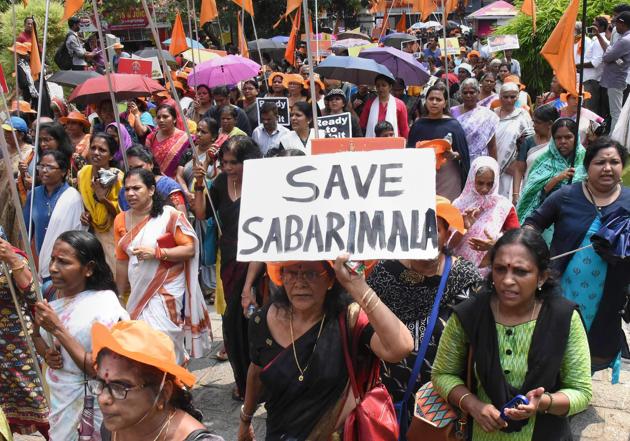Why can’t women pray in public sacred spaces?
Traditionally, Indian cities have been marked by social segregation of the sexes and castes. This has to change.
On October 13, a Kolkata-based English daily reported a fresh phase in the ongoing controversy regarding the admission of women into the Sabarimala Temple in Kerala. A well-known public personality apparently declared that women should be ripped apart if they tried to enter the sacred shrine and that the judges who gave them permission to do so were idiots.

Foucault has written that space is a metaphor for or site of power. In 1996, celebrated urban geographer David Harvey commented that many eminent scholars believe that space is a social construct. Different societies produce qualitatively different concepts of space. The most widespread forms of appropriation of space comprise land use and the built environment. These are dominated by concepts of private and public property, state and administrative purposes, exclusive communities and neighbourhoods, and other forms of social control including surveillance.
Traditionally, Indian cities have been marked by social segregation. One of the most interesting forms of urban landscapes is the public “sacred” space. Paul Wheatley observed that Chinese cities were conceived as “cosmo-magical symbols” of the universe. So far as the ancients in Asia were concerned, the “real” world transcended geometric space and was conceived in terms of an extra-mundane, sacred experience. The “sacred” was real and the purely secular never more than trivial. Purely secular spaces can be understood as public or private, the latter including the domestic arena.
Hindu tradition down the ages has permitted men and women to participate in domestic sacred rituals. Aristocratic families saw to it that the male head of the household worshipped jointly with his wife in ‘thakurbaris’. In ancient India, a very high status was given to intellectual educated women, whether queen or courtesan. The ‘devadasis’ and temple prostitutes had another social status. However, it was understood that women should pray in private domestic spaces. Public shrines and temples frequently banned the entry of women, Dalits and other stigmatised groups.
The situation has changed considerably since the 20th century and Independence in 1947, when Dr BR Ambedkar and others pieced together the Constitution of India. The rule of law has become an important diktat, particularly for social reform. Many Hindu temples have been opened to women, Dalits and other formerly excluded people. Many traditional Muslim norms, rites and rituals have also seen legal social reform. Several of these changes focus on the improvement of the status of women in India.
In this season of Durga Puja in Bengal, men and women all congregate to pray in public pandals. What has happened to the attitude towards Indian women? Why shouldn’t women pray in public sacred spaces? They have as much right and liberty to communicate with the Almighty in large sacred shrines as anyone else.
Aditi Chatterji is honorary associate, Centre for Urban Economic Studies, University of Kolkata
The views expressed are personal






